
26-06-2024 21:08
 Hans-Otto Baral
Hans-Otto Baral
On the underside of a very rotten board in our gar

26-06-2024 22:43
 Thierry Blondelle
Thierry Blondelle
Hello, Found on a wet piece of wood (Fraxinus ?

26-06-2024 16:32
Salut.Un champignon supposé sur certaines feuille

16-06-2024 14:36
Hello.An anamorph located in nature, on the surfac

23-06-2024 17:58
Bonjour, j'ai trouvé le Cheilymenia jaune vif sui

09-01-2023 08:14
Ascomiceto anaranjado sobre suelo desnudo, 29/12/2

15-07-2014 12:51
Gernot FriebesHi,identifying Lambertella species is difficult en

21-06-2024 18:18
Sylvie Le GoffBonjourpourais je avoir confirmation pour Lachnum
Hairless brown small Pezizales on rotten conifer board
Hans-Otto Baral,
26-06-2024 21:08

On the underside of a very rotten board in our garden grew a single apo of 5.5 mm diam. with a broad and short stipe with scattered red-brown protuberances.
No hairs, asci inamyloid (or laterally very faintly blusih?), with croziers.
Spores *16-20(-21.5) x 8.2-10 µm, smooth, with group of small LBs in each half.
Paraphyses without refractive contents or pigment.
Michel Hairaud,
26-06-2024 22:15

Re : Hairless brown small Pezizales on rotten conifer board
Bonsoir Zotto,
I suppose you had a look at the ground under the board ? Macro and spores remind me of S. trifoliorum , and my guess was that a lonely apo could have developped on the wood , but of course the IKI reaction doesn't match ...
AmitiésMichel
I suppose you had a look at the ground under the board ? Macro and spores remind me of S. trifoliorum , and my guess was that a lonely apo could have developped on the wood , but of course the IKI reaction doesn't match ...
AmitiésMichel
Nihad Omerovic,
26-06-2024 22:21
Re : Hairless brown small Pezizales on rotten conifer board
Possibly Purpureodiscus subisabellinus.
Michel Hairaud,
26-06-2024 22:29
Nicolas VAN VOOREN,
27-06-2024 07:28

Re : Hairless brown small Pezizales on rotten conifer board
Yes, ascospores are typical.
Hans-Otto Baral,
27-06-2024 08:51

Re : Hairless brown small Pezizales on rotten conifer board
Ah. I should have known that fungus. Thanks! I will keep it moist to develop conidia on the spores.

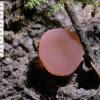
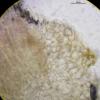
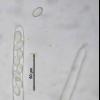
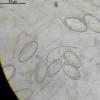
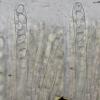
 DSCN0306-0001.JPG
DSCN0306-0001.JPG